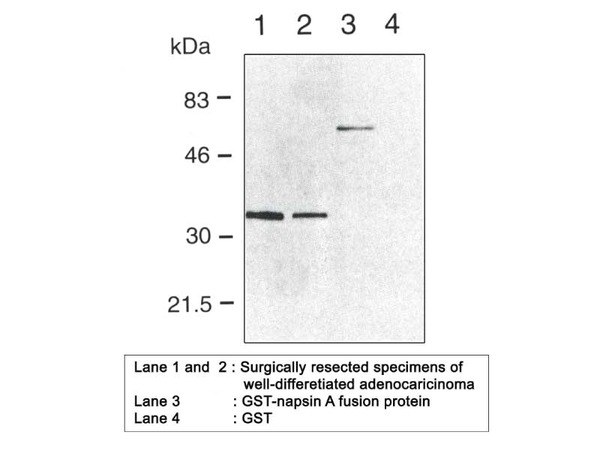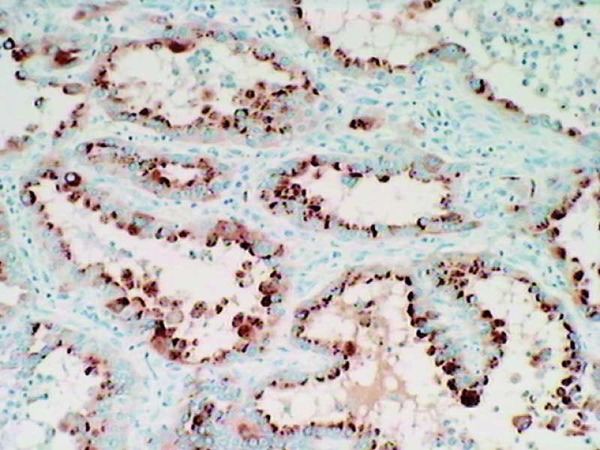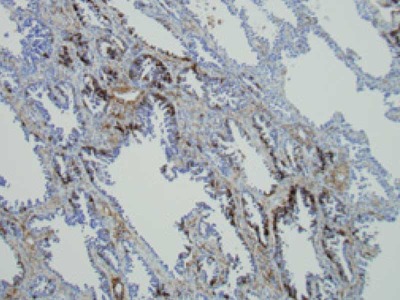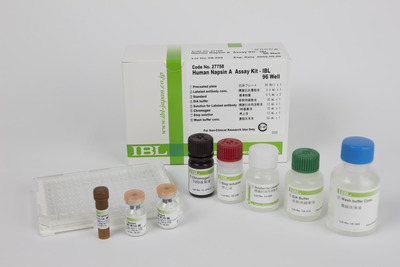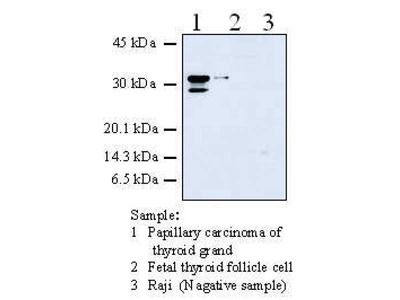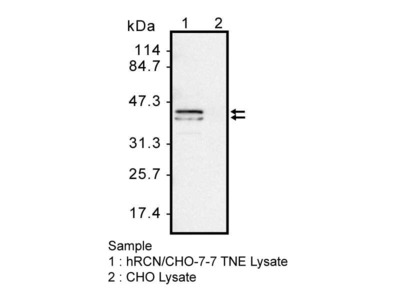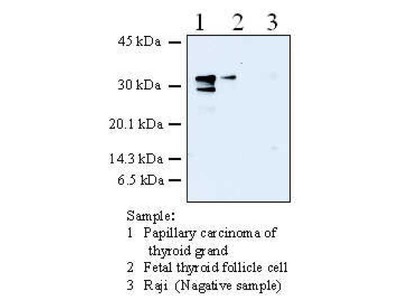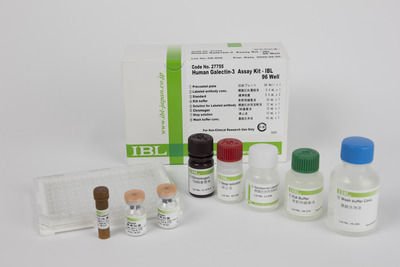- HOME >
- For Researchers >
- Product Search >
- Search Result >
- #10221 Anti-Human Napsin A (TMU-Ad02) Mouse IgG MoAb
Product Search
#10221 Anti-Human Napsin A (TMU-Ad02) Mouse IgG MoAb
- Intended Use:
- Research reagents
- Application:
- WB, IHC
- Package Size1:
- 50 μg
- Package Size2:
- 5 μg
- Note on Application Abbreviations
- WB:Western Blotting
- IHC:Immunohistochemistry
※ The product indicated as "Research reagents" in the column Intended Use cannot be used
for diagnostic nor any medical purpose.
※ The datasheet listed on this page is sample only. Please refer to the datasheet
enclosed in the product purchased before use.
Product Overview
Product Overview
| Product Code | 10221 |
|---|---|
| Product Name | Anti-Human Napsin A (TMU-Ad02) Mouse IgG MoAb |
| Intended Use | Research reagents |
| Application | WB, IHC |
| Species | Human |
| Immunizing antigen | Synthetic peptide of the N-terminal part of human Napsin A |
| Source | Mouse-Mouse hybridoma (X63 - Ag 8.653 × BALB/c mouse spleen cells) |
| Clone Name | TMU-Ad02 |
| Subclass | IgG1 |
| Purification Method | Affinity purified with antigen peptide |
| Specificity | Immunohistochemical study in histopathological types of lung carcinoma |
| Package Form | Lyophilized product from in PBS containing 1 % BSA and 0.05 % NaN3 |
| Storage Condition | 2 - 8℃ |
| Poisonous and Deleterious Substances | Applicable |
| Cartagena | Not Applicable |
| Package Size 1 | 50 μg |
| Package Size 2 | 5 μg |
| Remarks1 | The commercial use of products without our permission is prohibited. Please make sure to contact us and obtain permission. |
Product Description
Product Description
A new protein isolated by two-dimensional immuno-electrophoresis from tissue of lung adenocarcinoma was identified as Napsin A, a new aspartic Proteinase. The reactivity of the antibody showed immunohistochemically in type II pneumocytes, alveolar macrophages, renal tubules and exocrine glands and ducts in pancreas. In particular, type II pneumocytes and alveolar macrophages showed strong staining. The specificity of the antibody is very interesting, which in primary lung adenocarcinoma, 47 out of 58 (81.0%) primary lesions were positive. All well-differentiated adenocarcinoma except those of goblet type showed strong staining. The antibody may be a useful tool as a tumor marker for primary lung adenocarcinoma.

